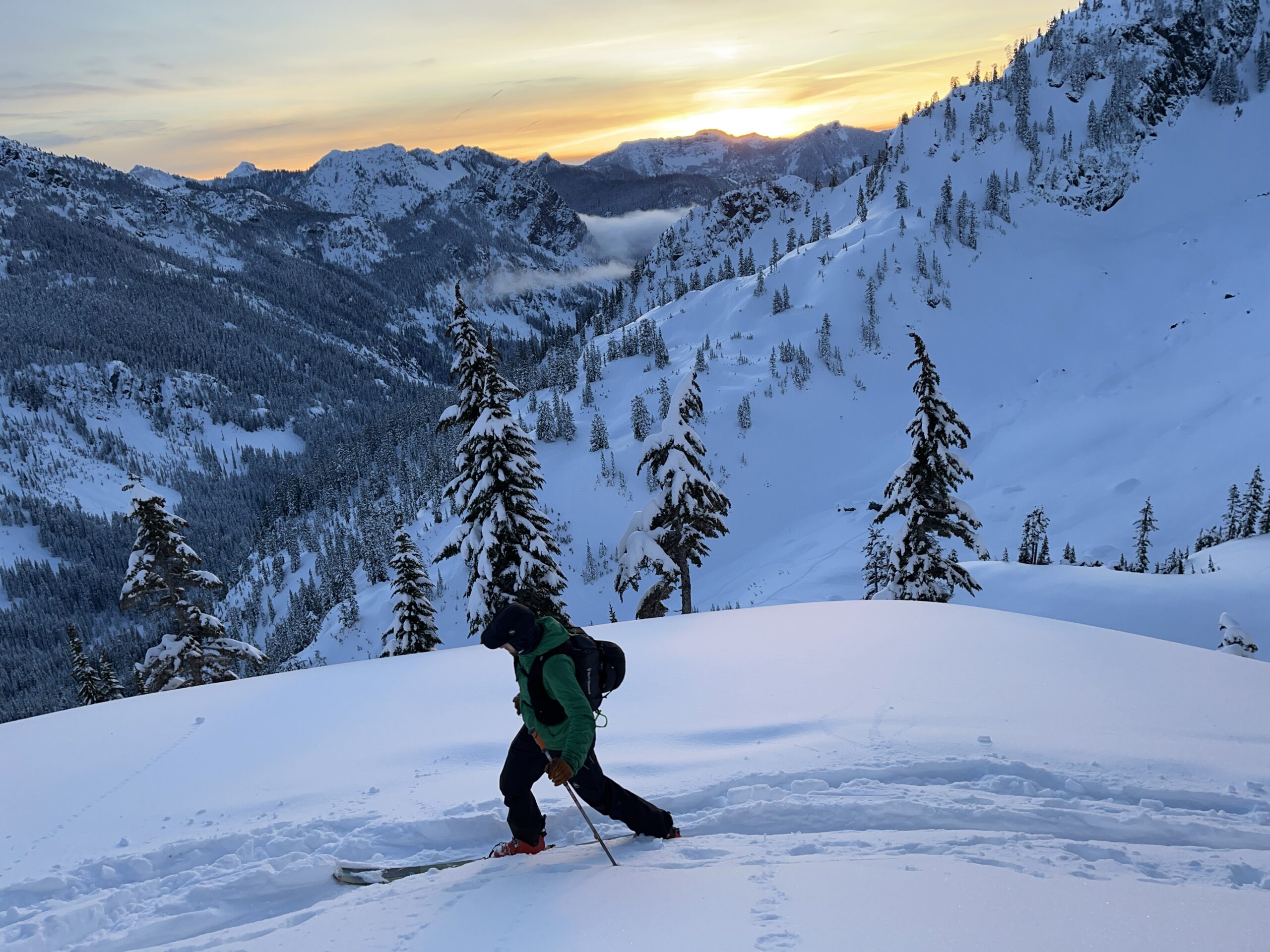
Intro
Most of our reviews are pretty long — and take a long time to produce — because we want to provide enough info for you to actually determine whether the gear we tested will work well for you.
But we get asked to check out an increasingly wide range of products, and sometimes, we just want to tell you about something we’ve been using and loving lately.
So that’s where this monthly series — Stuff We Like — comes in, where we keep you current on a broad range of stuff we’re currently digging.
And if there’s something you love that you think we ought to check out, drop us a note in the comment section below.
A Big Wok
MSRP: Varies; I paid about $40
David Golay: Unlike certain colleagues at Blister, I really like cooking. For a while now, I’ve been working on learning a bunch of Thai and other Southeast Asian dishes and had been idly thinking that I’d like a wok to make stir frys, fried rices, and so on easier.
The problem is that my house has a pretty crappy coil burner electric stove, and some things I read on the internet suggested that you really want a big gas burner to use a wok properly. So out of that trepidation, I held off on buying one for a long time, until I impulsively snagged a relatively inexpensive one during a visit to my local Asian grocery store. And while it would almost certainly work even better on a nice gas stove, and while the $40 grocery store wok that I wound up with is presumably not exactly state-of-the-art, it’s been a big life upgrade.
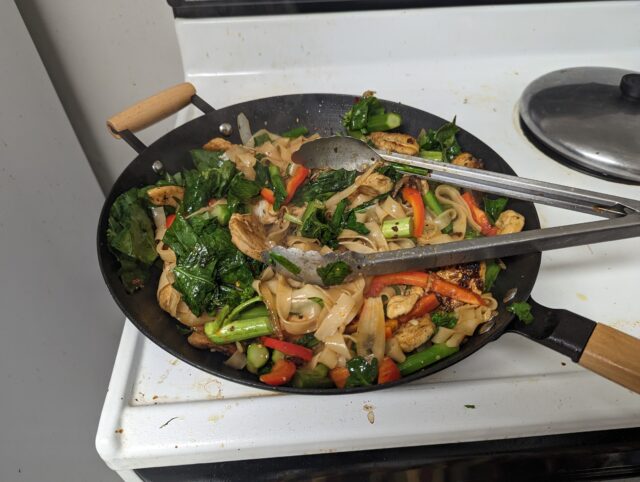
Mostly, the extra real estate to stir fry a whole bunch of stuff at the same time has made doing that way easier, and the shape of the wok makes turning over the contents to cycle them through the highest-heat much more straightforward than a fully flat bottomed pan. It’s almost like they were designed for that.
I’m not going to pretend that the specific wok that I bought is anything special. I did literally zero research into specific brands or models before I bought it, but I’ve got no complaints after a few months. I’m just really pleased to have a wok after casually wanting one for years, but talking myself out of trying to use one on my cheap stove and store it in my small-ish kitchen. It’s worth it.
Smith Nexus MIPS
MSRP: $325
Jed Doane: Smith’s Nexus is its newest full-featured, top-of-the-line helmet, and after a few months of use inbounds and in the backcountry, I’ve been quite impressed. The Nexus utilizes all of Smith’s highest-end technology and comes in a durable, comfortable package.
It features full-coverage Koroyd (most of Smith’s other helmets have only partial coverage), which provides additional impact protection via a honeycomb material that spares weight. These features do take up space, and the Nexus is a bit bulkier and heavier than Smith’s popular Vantage (size Large, Blister’s measured weight 652 g vs 569 g), but the outer plastic does seem sturdier, and I haven’t noticed a practical difference in weight or bulk.
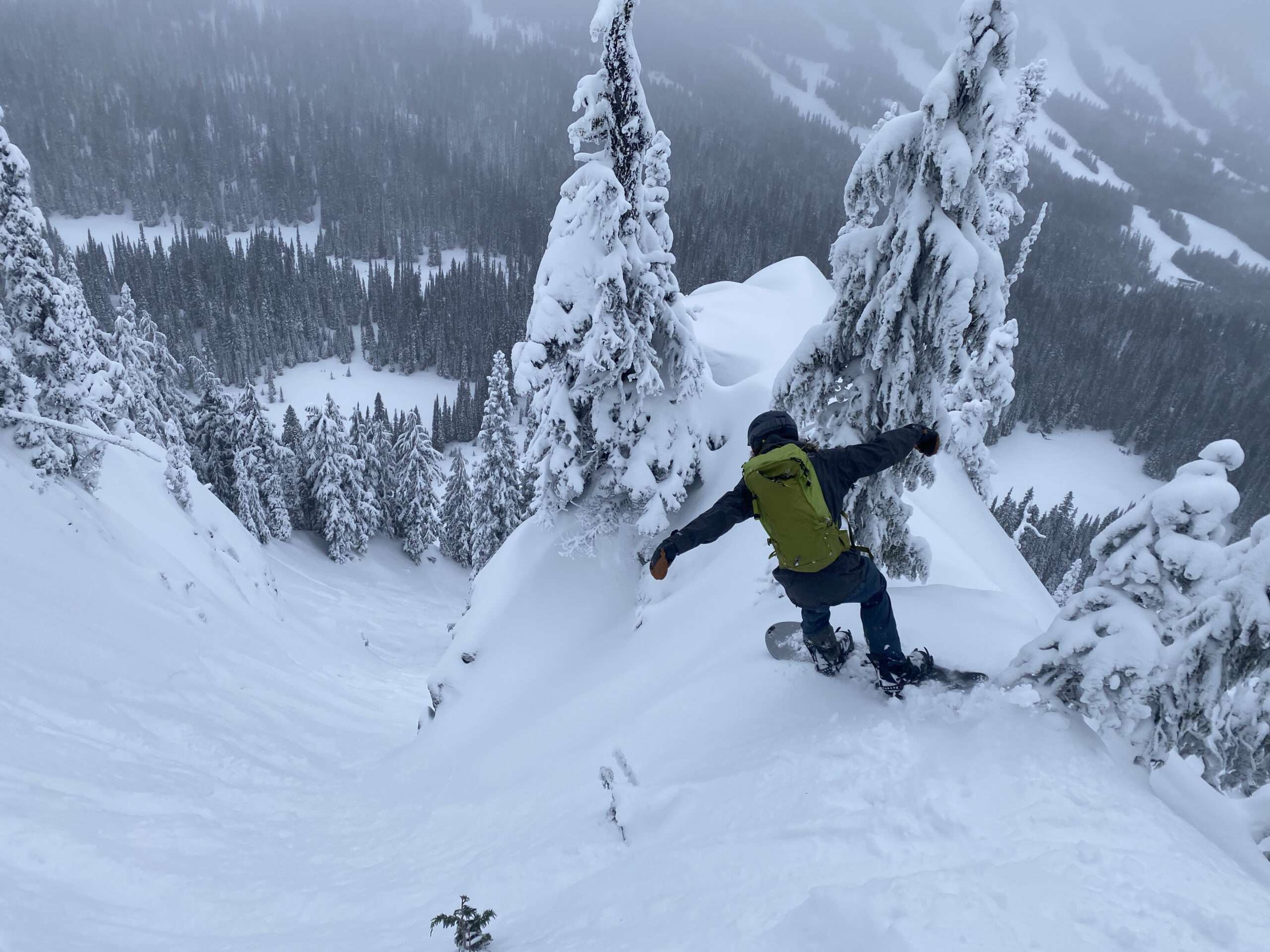
The magnetic buckle is sturdy and easy to use one-handed and with mittens, a welcome change from standard buckles. The BOA-based custom fit system wraps around to the forehead and is a major upgrade from systems that only tighten the back of the helmet. My head fits the size L reasonably well without tightening, but I find myself tinkering with the fit regularly if I’m wearing a balaclava underneath. The dual-zone ventilation is similar to the Vantage and features a nifty “halfway” open setting that I find myself using on average days.
Overall, it’s an expensive helmet and slightly heavier than other options, but a worthy splurge for those wanting maximum protection with customizable fit and ventilation.
Hestra Freeride CZone 3-finger glove
MSRP: $165
Jed Doane: I’m a longtime fan of Hestra’s classic Fall Line models, and the snowboard-specific Freeride Czone 3-finger has become my new cold-weather daily driver.
Freeride CZone is a newer line specifically designed for snowboarding and includes reinforced palms, inward facing seams for better dexterity, and a CZone waterproof / breathable membrane. Like most Hestra gloves, they come in 5-finger, 3-finger, and mitt options, and I prefer the happy medium of dexterity and warmth from the 3-finger design.
These lobster mitts have everything that I love about the Fall Line 3-finger: soft leather, a short cuff with long-lasting elastic for “set it and forget it” closure, a soft and durable polyester lining, and just the right amount of insulation. The subtle design changes are also welcome; the finger seams are a common spot for durability issues on the classic Fall Line models, especially after manipulating sharp binding straps for seasons on end. I’ve had no issues with the different seams so far.
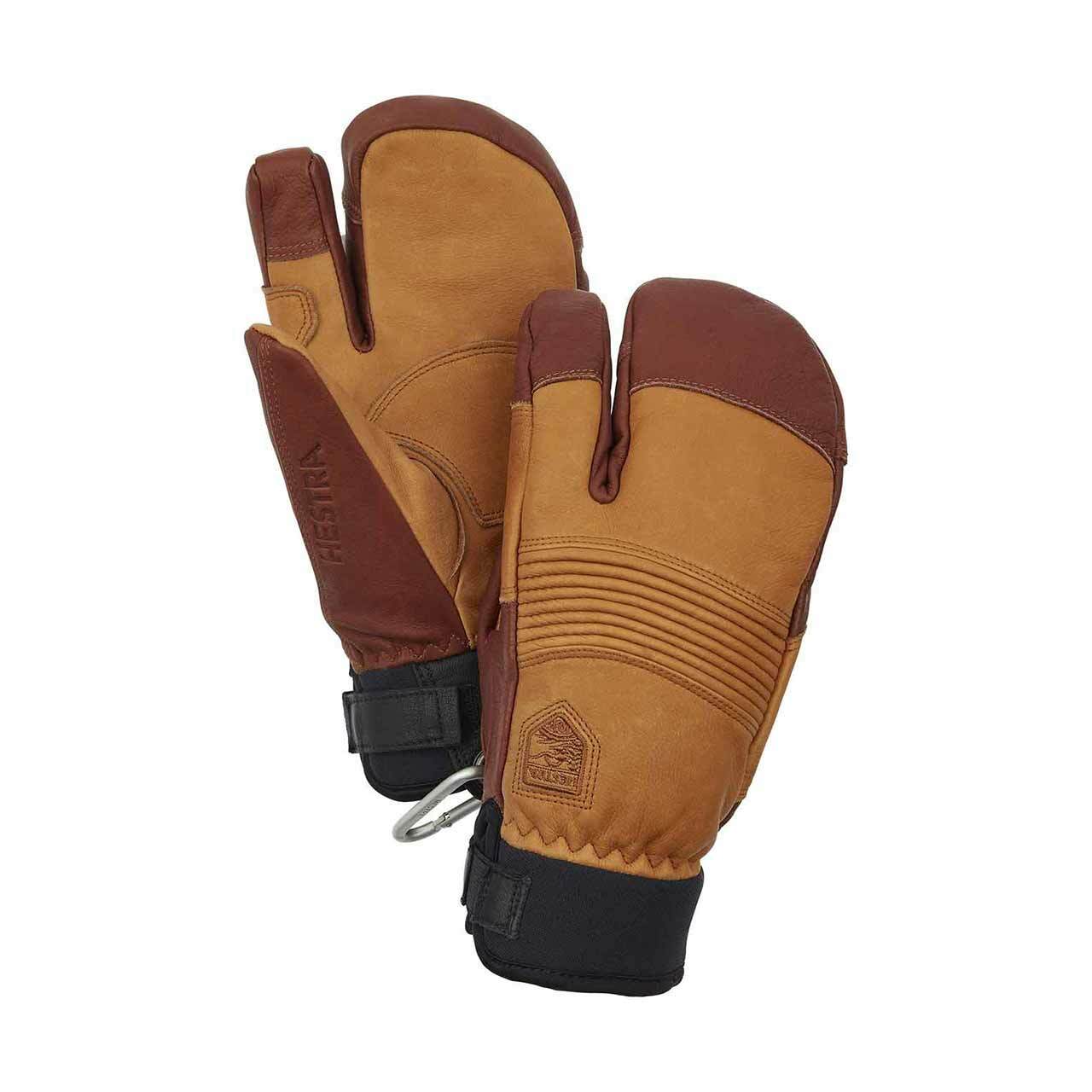
I was initially worried about the inclusion of a waterproof membrane — I had no issues with previous Fall Line gloves without a membrane (I treated them regularly with Hestra’s Leather Balm) and thought that the breathability might suffer with the inclusion of a membrane. CZone is a proprietary membrane with little objective performance data available, but I found the Freeride CZone 3-finger to be quite breathable. On a frigid, windy morning in Grand Teton National Park, my standard skinning gloves were not cutting it, and I finished a steep ascent using the Freeride CZone 3-finger without noticeable sweat or breathability issues.
Overall, the Freeride Czone 3-finger is a solid choice for those looking for classic Hestra design with a waterproof / breathable membrane and enhanced snowboard-specific durability.
Reima Toddler High Top Waterproof Winter Shoes – Qing
MSRP: $79.95
Kristin Sinnott: My 4-year-old son does not attend traditional pre-k. Instead, he spends most of his days tromping around the woods and parks in Northern New Mexico while playing with friends – and hopefully learning some life skills while he’s at it. His schools don’t have classrooms so we always need to drop him off prepared for a full day outside.
I purchased a pair of Reima boots last spring anticipating that his growth spurt would happen before winter arrived. Well, it did not, so I was left with a pair of too-big snow boots, the Reima Nefar. He happily wore the Nefar boots until the Qing boots arrived. Both pairs of boots have good traction and are easy to get on and off. The Nefar are more waterproof than the Qing, and while we like both pairs of boots, my son prefers the Qing.
They aren’t completely waterproof, but they keep his feet warm and mostly dry. The two velcro straps keep his feet more secure, especially around the shin, and he calls them his “fast shoes” because he’s able to run faster in them. The sizing for both pairs of boots seems to fit pretty true to size. He wears a 9.5 in Merrell sneakers and a 9.5 in the Qing boots.
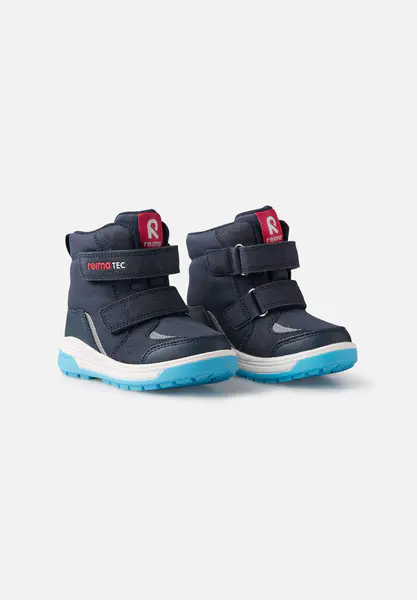
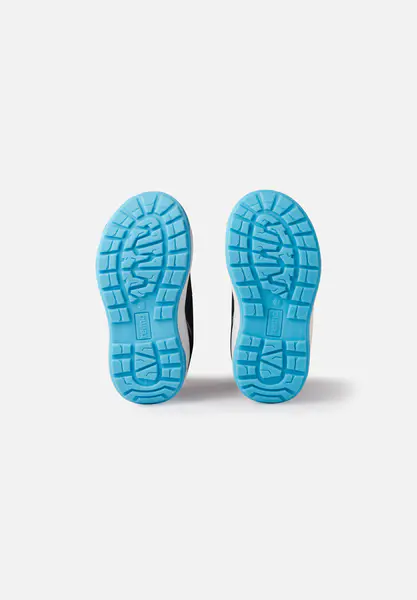
Helly Hansen Kid’s Dynamic Outdoor Pants
Kristin Sinnott: My son’s outdoor schooling has been great for him and for gear testing. With school being held outside, regardless of the weather, I needed to find alternatives to cotton leggings, especially since all his cotton pants ended up with holes in the knees after a few days. The Dynamic Outdoor Pants have been our go-to for non-snow days this fall and winter.
The Dynamic Outdoor Pants are water resistant, durable, and keep him warm on all but the coldest days. They are loose enough that he is able to wear a baselayer underneath, but the interior fabric is also soft enough that he can wear the pants solo too. From school days to camping trips to hiking, the Dynamic Outdoor Pants have gotten a lot of use. It is one of the best purchases I’ve made for my son and I plan to get the next size up once he outgrows this pair.
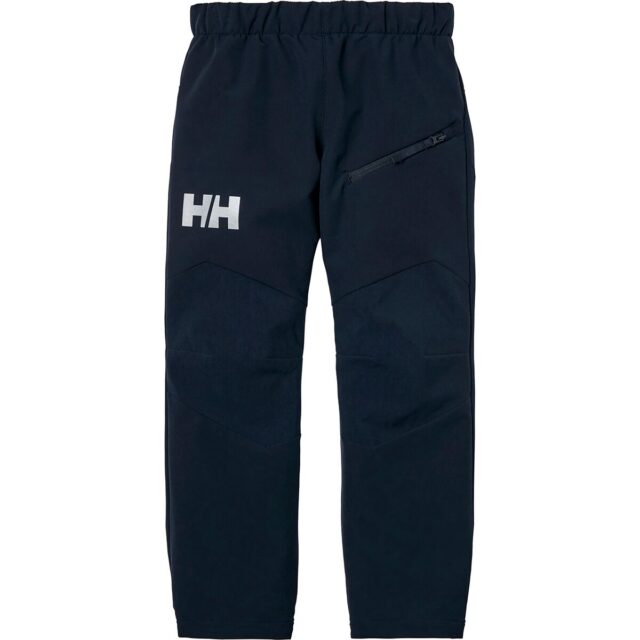
Black Diamond Cirque 22 Ski Vest
MSRP: $180
David Golay: I’ve been using the Black Diamond Cirque 22 Ski Vest for most of my touring days so far this year, and I’m a very big fan. In short, the Cirque 22 is kind of a hybrid between a running vest and a ski pack, and it’s super well organized and functional for moving fast in the mountains.
The most standout feature are the giant zippered pockets on the shoulder straps — hence the “vest” name — which are roomy enough to carry a ton of the stuff that I’d like to be able to easily access quickly while touring. I’ve been carrying a small first aid kit, a multitool, multiple snack bars, a bunch of Voile straps, a big, high-powered headlamp, and a baggie of spare boot and binding hardware between the two, with room to spare. And then there are two stretchy open pockets in front of those, perfect for stashing moderately sized gloves while skinning if you warm up too much and want to take them off.
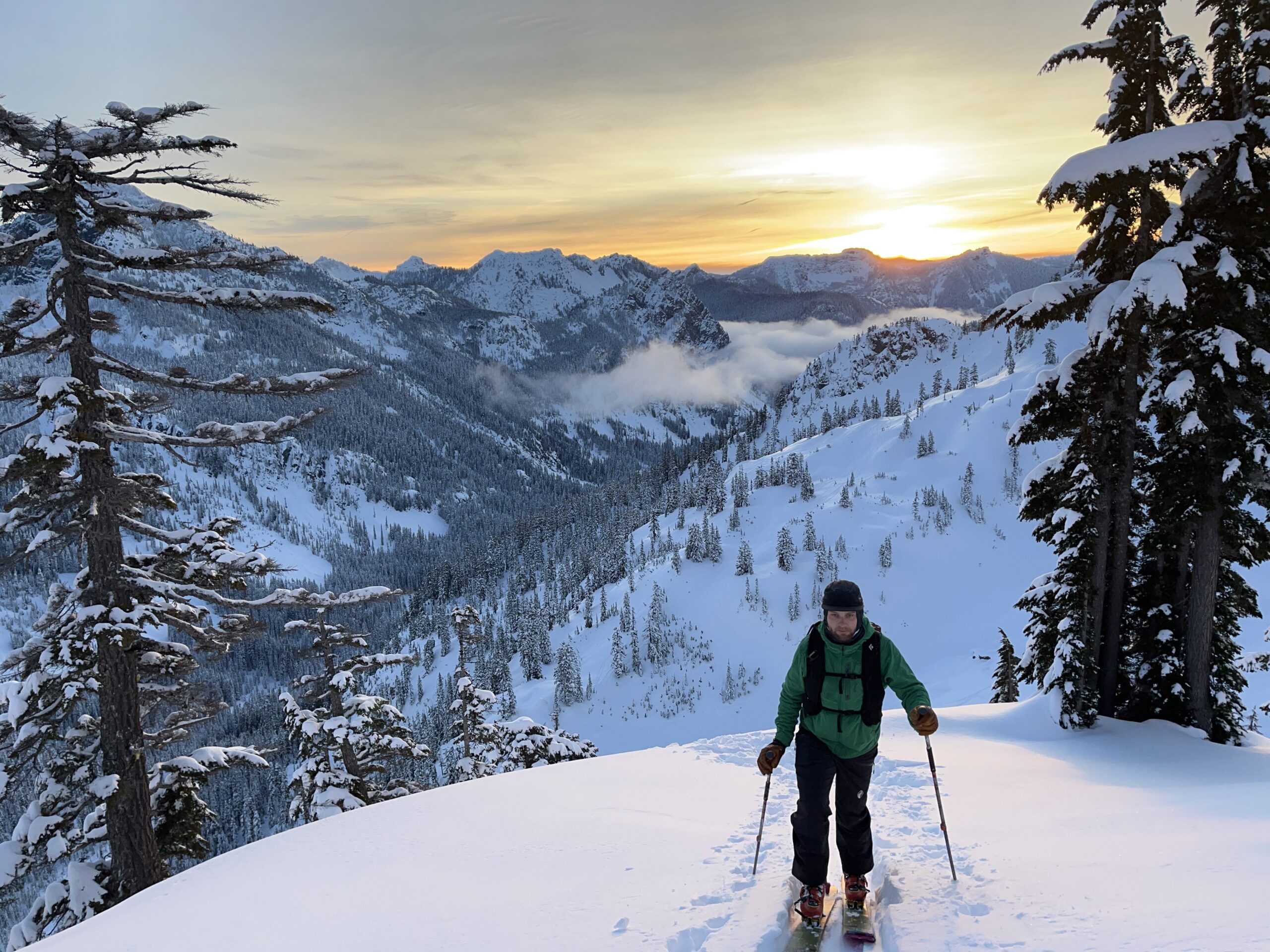
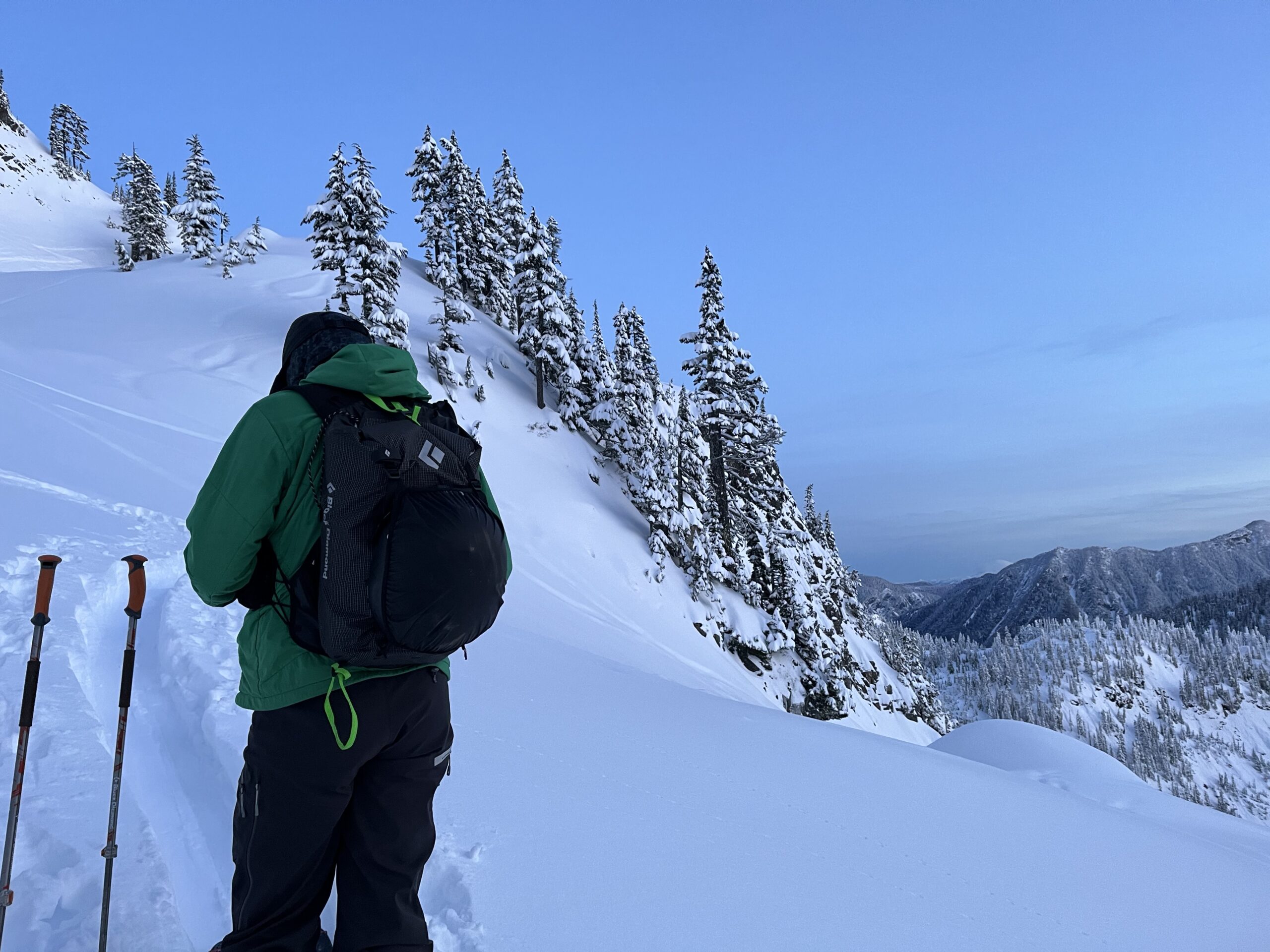
Having all that stuff readily accessible on the front of the pack is great, and moving that weight into the shoulder straps also means that the Cirque 22 carries its weight especially well. And then instead of using a more conventional hip strap, the Cirque 22 uses a pair of smaller straps to tie the main shoulder straps together — think two chest-strap-sized ones across the front instead of a small chest strap and a bigger waist one — and since the lower strap sits higher than a waist strap would, it’s significantly more comfortable and less restrictive than most conventional packs when scrambling and doing stuff that involves bending over at the waist a lot. The flip side is that the pack is a bit more prone to riding up your back while leaning forward. This has been a non-issue for me while actually skiing, but I’m also not throwing flips in the backcountry, and if I do find myself upside down, there are bigger issues at hand. Your mileage may vary.
The Cirque 22 also features a small dedicated pocket at the bottom of the pack, with a dual-zipper flap that opens from the side for skin storage on the descent. It’s quite convenient to use and does a good job of keeping everything else in the pack dry on days that involve a bunch of laps and a lot of stowing of wet skins in the pack. The divider between the skin pocket and the main part of the pack can be opened with an internal zipper to make more room if you want to forgo the skin pouch. And then there’s an internal sleeve for a shovel blade on the outer face of the pack and a sleeve for the handle and probe on the side of the main pocket, plus an extra zippered pocket with a key clip at the top of the main pocket, which closes with a drawstring and a hook and ladder flap over the top of that. It’s not the absolute most weatherproof arrangement, especially if the pack is full to the gills and the flap can’t cover the top quite as fully, but it works well overall and is quite quick and easy to open and close once you get the hang of it.
A removable and stowable helmet carry on the back of the pack and a diagonal ski carry with a sling loop that clips to a shoulder strap — so it can be loaded while the pack is being worn — round out the main features. It’s thoughtfully designed, super easy to use, and does a great job of keeping your gear organized and readily accessible in a fairly light, very comfortable package.
That said, there are a few little details that could be improved — my biggest gripe is that the internal sleeves for the probe and shovel handle are pretty short, and my preferred G3 probe’s segments are too long to fit in it neatly. It’s possible to unzip the divider for the skin pocket a little bit and just leave the probe free-floating in the pack to fit a longer probe in, but it’s not ideal. The sleeve on the left side of the pack does extend pretty much the full length, but with the probe snuck through into the skin pocket as described above, it can push out the bottom face of the pack a bit more and eke out a little extra room; the shorter sleeve on the right side of the pack stops above the skin pocket, and is borderline short for my shovel handle but works okay. It’d be nice if the sleeves were a bit longer (I am using the size Medium version of the pack, for what it’s worth).
But for most single-day outings where I don’t need to carry a huge amount of stuff, the Cirque 22 is working out great for me. Kudos to Black Diamond for making something genuinely different, and thanks to Cy Whitling for the recommendation.
SAC X Tight Chutes Faraday Beacon Pouch
MSRP: $25
Dylan Wood: The Sonoran Avalanche Center, the world’s first for-profit avalanche center focusing on raising awareness about a post-snow future*, teamed up with Tight Chutes to make this Faraday pouch for your cell phone. It’s becoming more and more apparent that our cell phone signals can interfere with our avalanche beacons in the backcountry, and this pouch is designed to seal off your phone, preventing 5G, Bluetooth, GPS, WiFi, and EMF signals from escaping the pouch and potentially interfering with your beacon.

I never want to leave my phone behind in the backcountry; it’s still very important for emergencies, taking photos, and route-finding. But, I really don’t want it interfering with my beacon’s ability to transmit or search, so this Faraday pouch has been a really great solution. I had confidence in its ability to do what it’s supposed to from the day I bought it — I put my iPhone in the pouch to test it out while I was listening to music through my Airpods, and the moment I sealed it, my Airpods immediately lost connection with my phone.
So sure, you might not be able to Strava your backcountry tours, but if you want to make sure your phone isn’t dangerously interfering with your life-saving beacon, this pouch is a great investment. Tight chutes also makes their own independent version, in case supporting non-snow avalanche forecasting isn’t your thing.
*The Sonoran Avalanche Center is satire and not an actual avalanche center. Dr. Len Necefer started it as a meme page dedicated to satirically referencing what an avalanche center might look like in a post-snow world, inspired by the disappearing snow around Mt. Lemmon near the Sonoran Desert and Tuscon, AZ. Their website and instagram are seriously funny, though. You can read POW’s short summary of the SAC here.
Quoc Gran Tourer Lace
MSRP: $260
Matt Mitchell: Having year-round trail access is one of the things I value the most about living in the Bay Area. Running along the coast in the typically sun-drenched winter months around here while my snowed-in friends at higher elevations labor away on treadmills is something I relish, albeit with a tinge of guilt. However, as I’ve gotten older (and arguably wiser), I’ve come to appreciate the toll training hard year-round takes on my body. My last three years of running have all been marred by overuse injuries, which always tend to crop up in the late fall when most other folks trade in their shoes for skis and take some time off their feet. So, since one of my main New Year’s resolutions is to stay able-bodied in 2023, I’ve committed to replacing a good portion of the weekday miles I’d normally spend running on my local trail system with more time spent on my gravel bike.
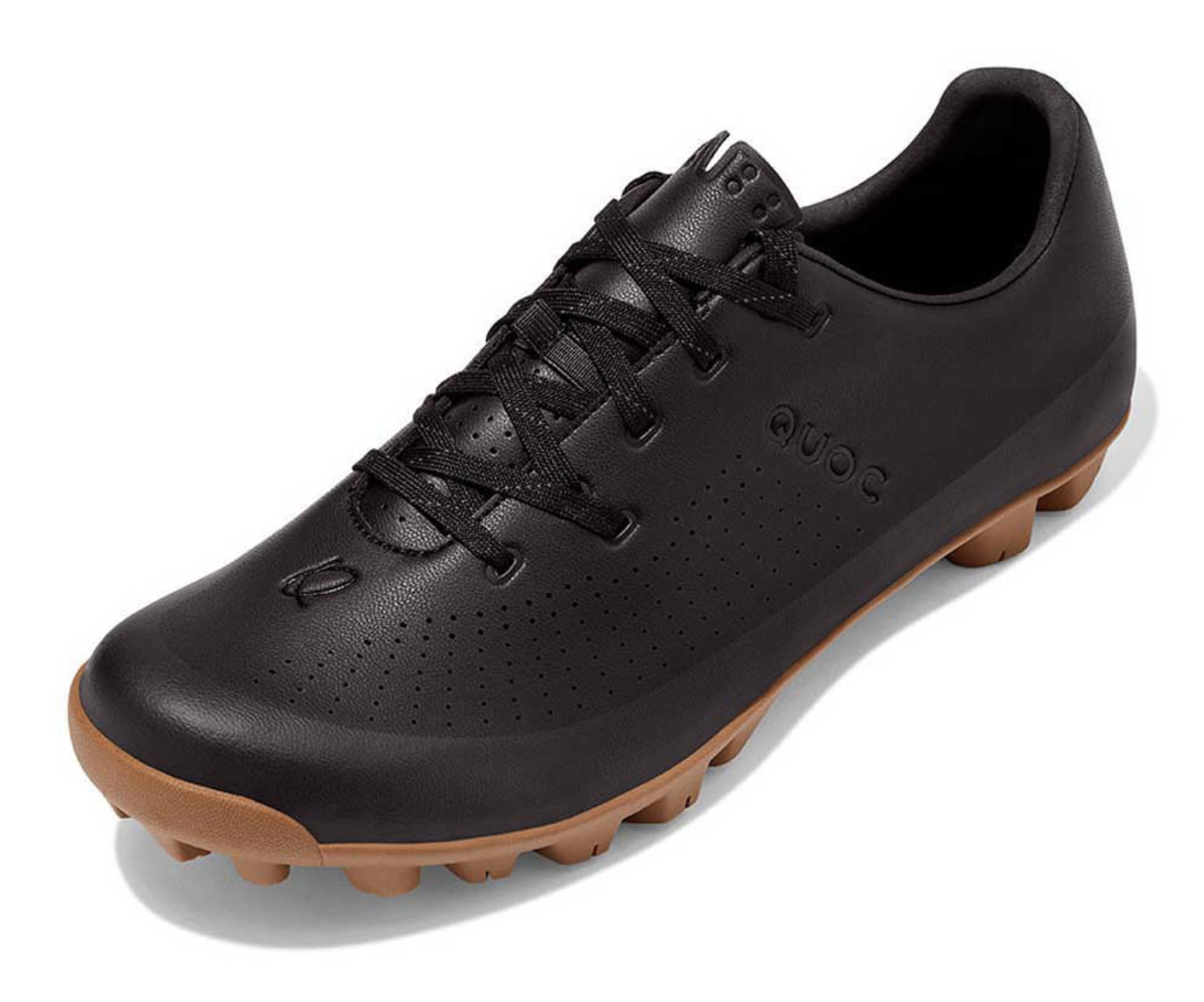
With this in mind, I had to go about updating some of my cycling gear, including my shoes. One of the numerous ailments I’ve suffered over the course of my running career is Plantar Fasciitis, so finding the right replacements that didn’t re-aggravate my dormant PF was a huge priority. After some internet sleuthing, and talking to a few friends in the cycling world with sensitive feet, I decided to give Quoc’s Gran Tourer a try. Based on what I’d heard, it seemed like a model roomy enough to fit my slightly wide, high volume feet, and it suited my preferences for mixed-surface all-day riding.
After breaking the Gran Tourer in on a 150-mile outing straight out of the box (something I probably wouldn’t do again), I couldn’t be happier with my purchase. The shoe is smartly designed, featuring a double-lock lace system (the Gran Tourer also comes with a BOA setup), a grippy rubber outsole, gusseted tongue, a reflective rear strap that aids in low light visibility, and compatibility with MTB / SPD cleats. Though a bit pricey, the Gran Tourer’s simple construction is tailored to be hardwearing, so hopefully I’ll be wearing this shoe for many years to come, just as long as it keeps my PF at bay!
MSRP: $119
Kara Williard: My mom is the first one that introduced me to Ethnotek, a company that uses ethically-sourced textiles from different villages around the world. They make a variety of backpacks, laptop bags, camera bags, and purses, and work with local villages to pay artisans a living wage. I have used several of their bags, namely small purses and a laptop bag that was my go-to while in school. More recently, I started using their 20-liter Premji Pack as my daily bag for work, and commuting to Mt. Crested Butte.
I wouldn’t call this a functional backpack for activities or hiking (it doesn’t have a waist belt), but for work or travel, it is a great size and keeps everything highly organized. The size has proven a pretty good option for carrying all of my daily things without being too bulky, and the design of the Premji itself is quite sleek. The main pocket has a laptop sleeve and a large compartment great for storing an assortment of items (extra layers, notebook, and snacks). The front pocket is also broken down into several compartments, good for keeping smaller items well-organized (pens, headphones, hand sanitizer, wallet, etc.).
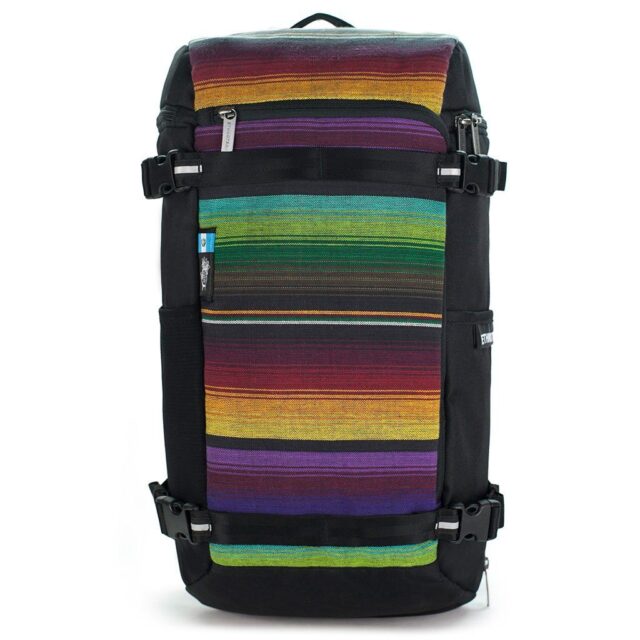
So far, I have been really impressed with the quality of all of the Ethnotek bags I’ve used. Of course, the options they provide for different patterns and textiles are really beautiful. I am always looking for companies taking a unique approach to building something in a way that’s also socially-responsible, so Ethnotek has been interesting to learn more about.
Cougar Vanetta Suede Winter Boot
MSRP: $170
Kara Williard: I have been seeking out winter footwear that is both super warm and provides great grip on ice, but that doesn’t just look like a clunky snow boot for quite some time. With a couple of really cold trips this year, I decided to try the Cougar Vanetta Suede Winter Boot, and have been quite pleased with it.
First of all, the Venatta Boot is super warm (rated for -24°C/-11°F), I have yet to feel my feet actually get cold while wearing them, especially when paired with a good, wicking sock. For reference, I have ventured out in temperatures around -15°F on several occasions. The boots are lined with super plush lining that feels ultra cozy after a long day wearing them.
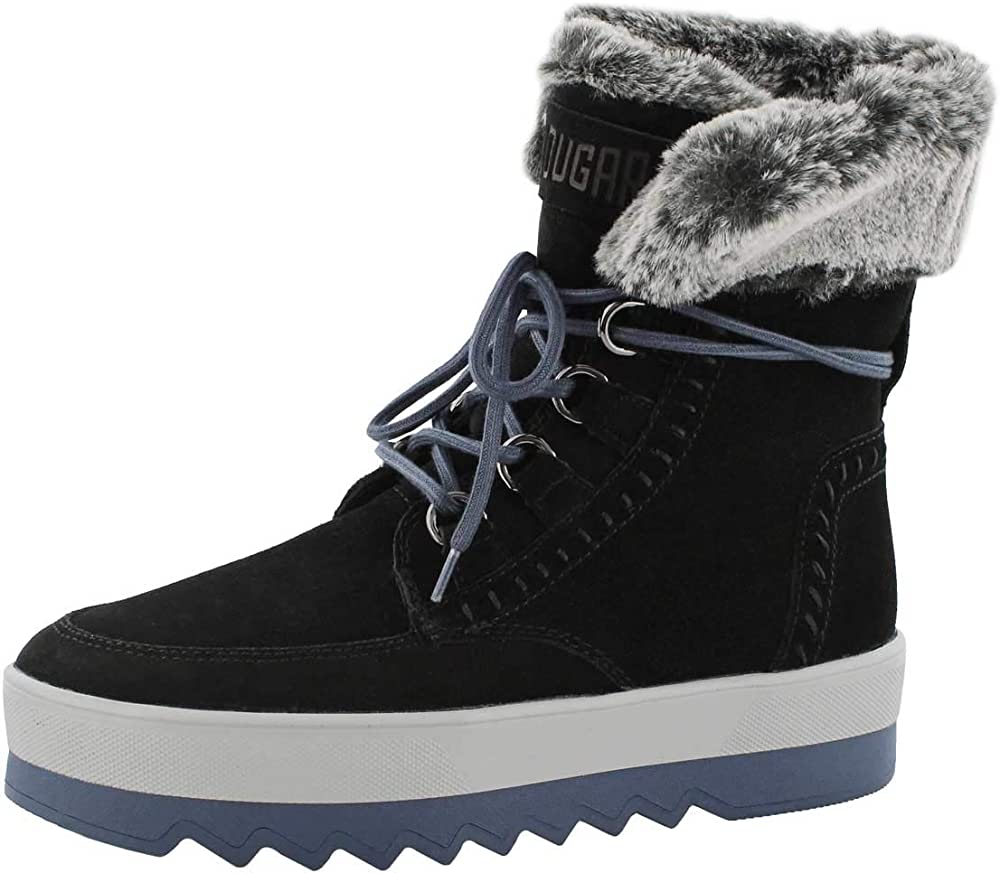
The Vanetta Boots are relatively easy to slip on and off (though they are laced). With mid-coverage above the ankle, they aren’t the greatest option for super deep snow, but for most days venturing around Crested Butte or other snowy towns, they have worked great.
So far, my favorite feature has been the non-slip soles which feel oh-so comforting on icy streets and parking lots (which, as it turns out, are some of the biggest daily hazards where I live). The tread, while really simple, does a great job of preventing any slippage front-to-back.
And lastly, they are, in my opinion, a cute and stylish boot that can be worn around town or out to dinner without feeling like they are too bulky. But because they are pretty cute, with a waterproof-suede finish, they aren’t necessarily the boots I would want to be tromping around in the mud or anything like that in, so they are a bit limiting. Overall though, they are a good option for a slightly dressier, but still highly functional winter boot.

How flexible are the Reima boots sole? We’ve not had good luck finding zero drop, hiflexibility winter boot for our kiddo.
I’d say they are slightly flexible. He can definitely bend the soles and is able to move a lot better in them than other boots. But they are kind of a hybrid between a sneaker and a boot.
Man that Ryan Conroy sure does take some sick photos!
As far as the Cirque Vest…just get Mammuts UL Carbon Probes and the alugator Shovel Shaft…in my case the longer sleeve takes both of those items pretty much ideally together….plus the carbon probe is fekkin light and small but not too short when you have to use it…plus get the alugator: cause its blade can be Used together with petzl’s gullies doubleduty-ing ad the fekkin avishovel- shaft, just add a small metal push Button to the gullies…thank me later…this setup is a nobrainer, cheers from Innsbrooklyn